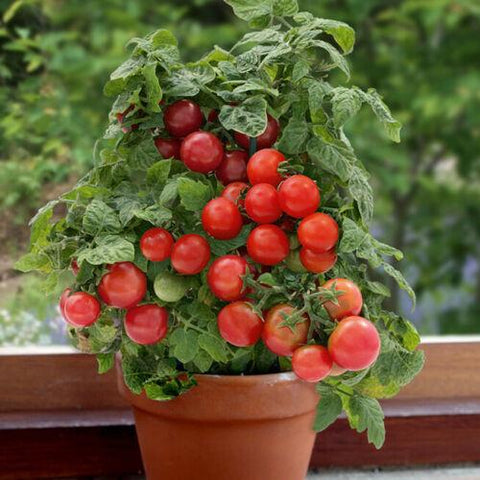Fertilizing Tomato Plants for Fruit Production

The yellow flowers produced by tomato plants must be fertilized before fruit can form. Once fertilized, the flowers develop into tomatoes, signalled by small green globes that become visible at the base of the blossoms and that eventually become mature tomatoes. Tomato growth begins just above the sepals, which supports the fruit as it enlarges and keeps it attached to the vine.
Fertilization
Tomatoes are considered monoecious, because plants bear both male and female reproductive parts. Within each flower, pollen from the male stamen must find its way to the female pistil for fertilization to take place. While this doesn't happen in every flower on every plant, the process can be helped along by the wind or by shaking the plants in an effort to more readily disperse the tiny pollen grains. Pollination and fertilization are also sometimes helped along by insects, such as bees, that forage inside the flowers for nectar and move the pollen from one place to the other in the process.
Tomato Flower Anatomy
There can be as many as a dozen yellow flowers on a single tomato branch or as few as one. The potential flower first appears on the end of the branch as a small tightly closed bud housed by outer leaves called sepals, also collectively known as the calyx. Just inside the calyx, the yellow petals, or the corolla, of the tomato flower develop around its reproductive organs composed of the stamen that houses the bright green carpels where fruit formation takes place following fertilization. Once fertilized, the yellow petals wither and fall off to make way for the developing fruit.
Fruit Development
Unfertilized tomato flowers are rejected by the plant and separated just below the sepals. If fertilized, the flower begins to age, a process called senscence, shedding its petals and female reproductive organs, revealing the tiny green tomato still attached to the sepals. Not all the flowers in a cluster, or inflorescence, develop and mature at the same rate, and it's not unusual to see unopened buds, mature blossoms and developing tomatoes on a single branch at the same time.
Considerations
Two common problems afflicting tomatoes develop at the point where the fruit is attached to what is left of the original flower. Catfacing, producing fruit resembling a cat's face, is the result of a defect in the flower during its formation and is most likely the result of an excess of nitrogen in the soil or setting the tomato plants out before the ground has warmed to at least 50 degrees Fahrenheit. Blossom end rot is a fungus usually caused by excessive moisture, premature planting in cold soil, and incomplete absorption of calcium from the soil. It produces fruit that decays from the blossom end. In many cases, the tomatoes aren't necessarily a total loss, as the affected parts can be cut off and the rest of the fruit used.
Reference source from SFGate
If you are interested in Tomato Seeds, buy at HERE





Leave a comment